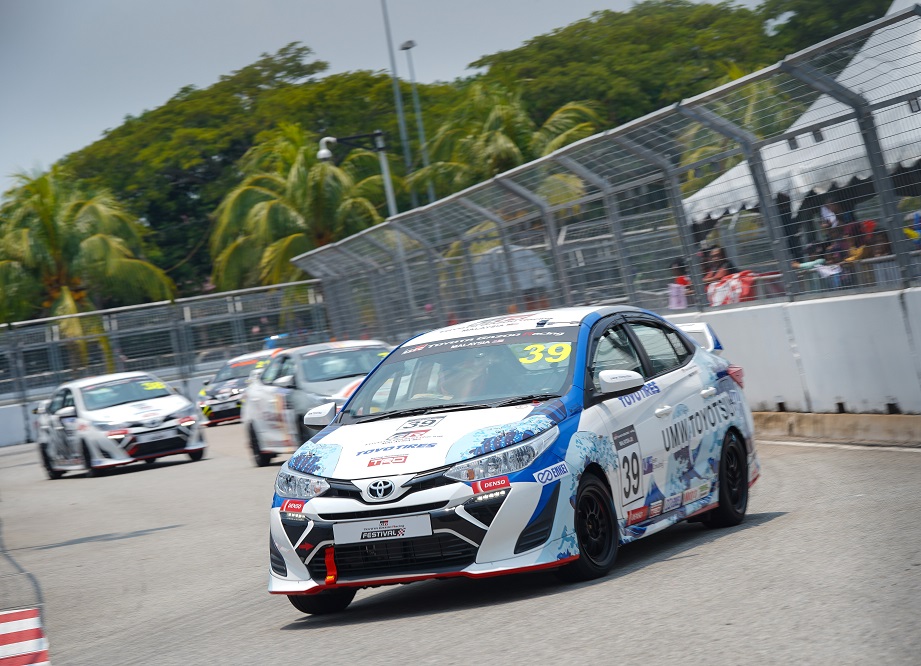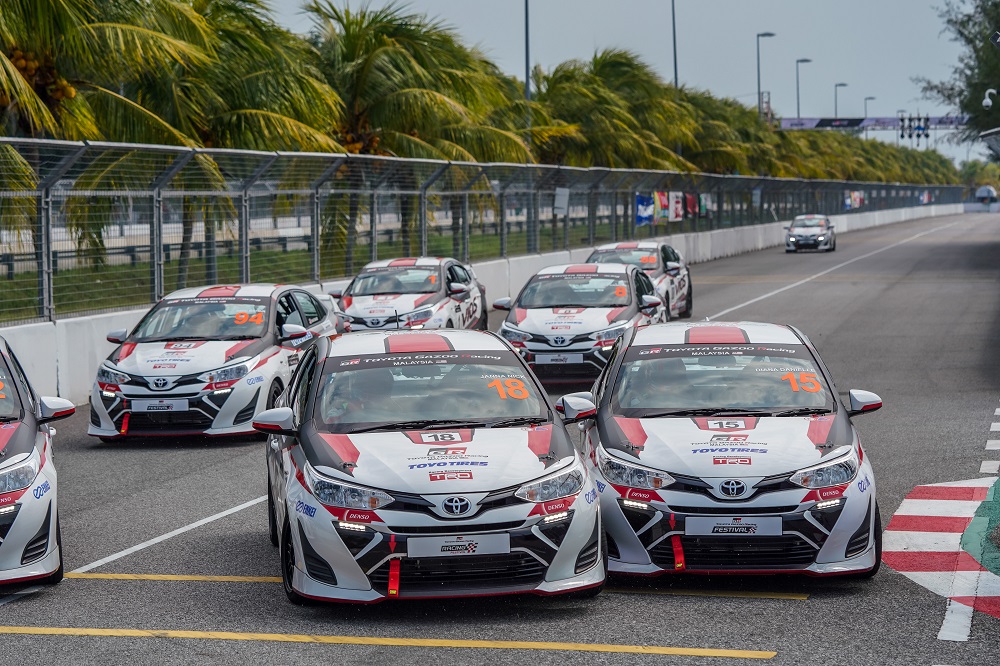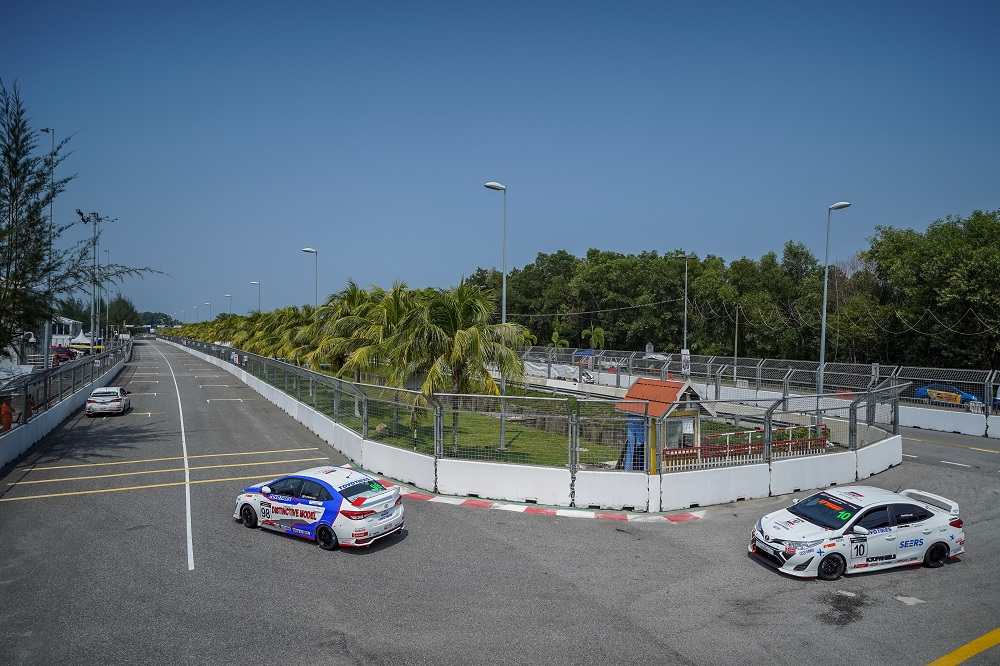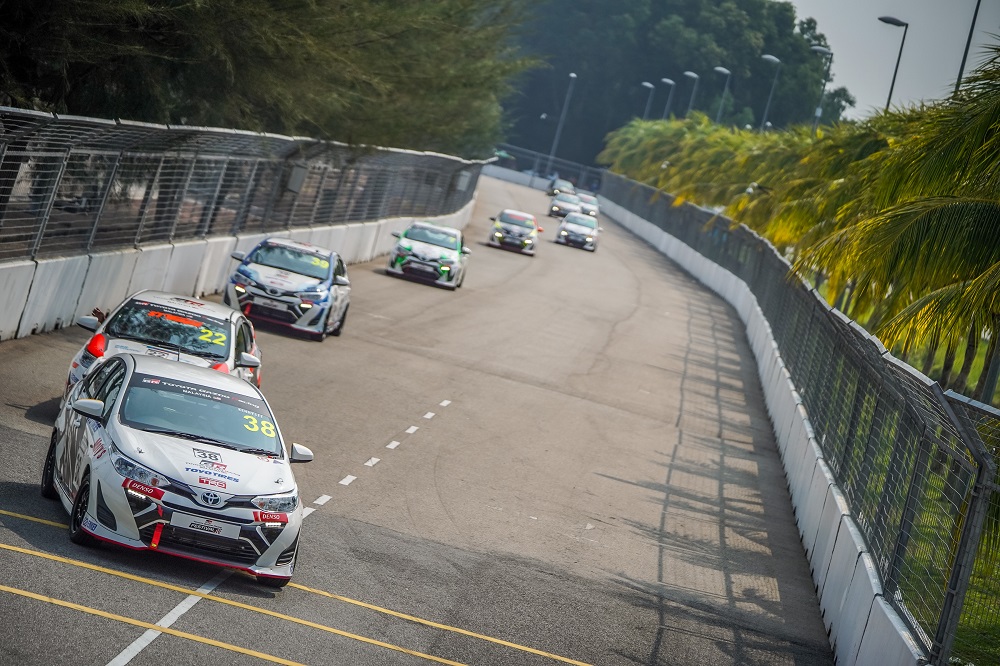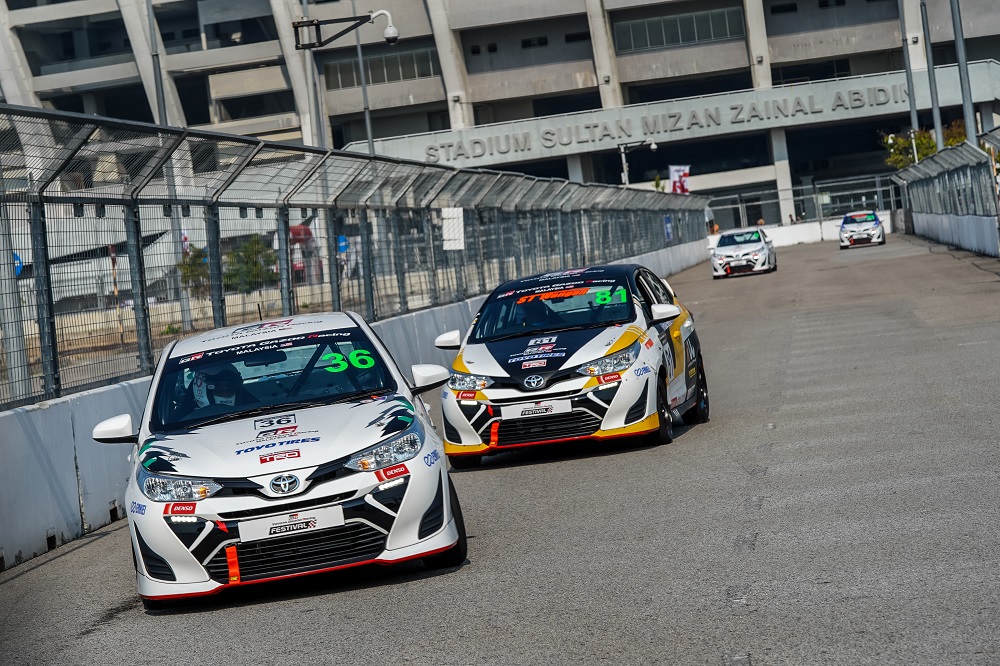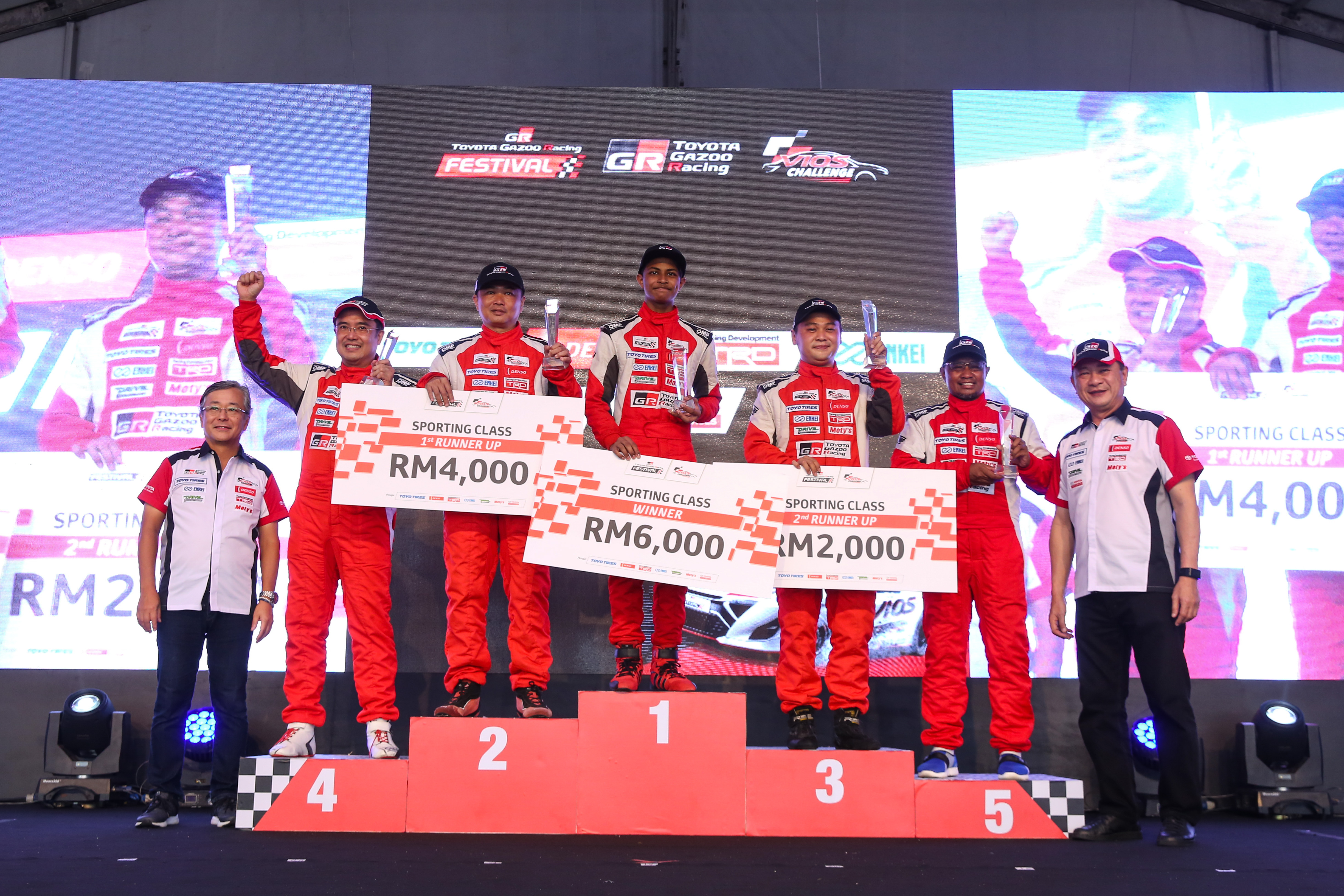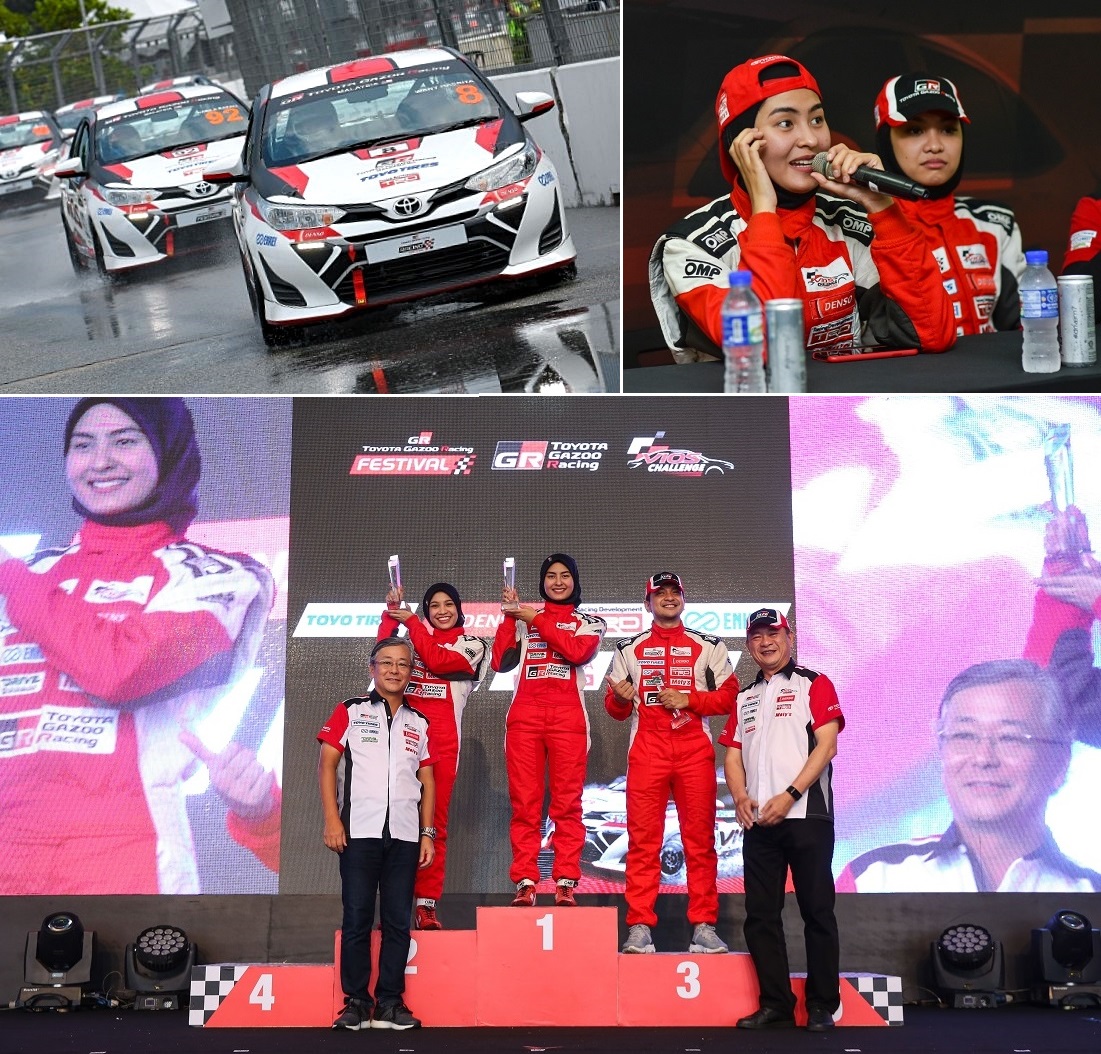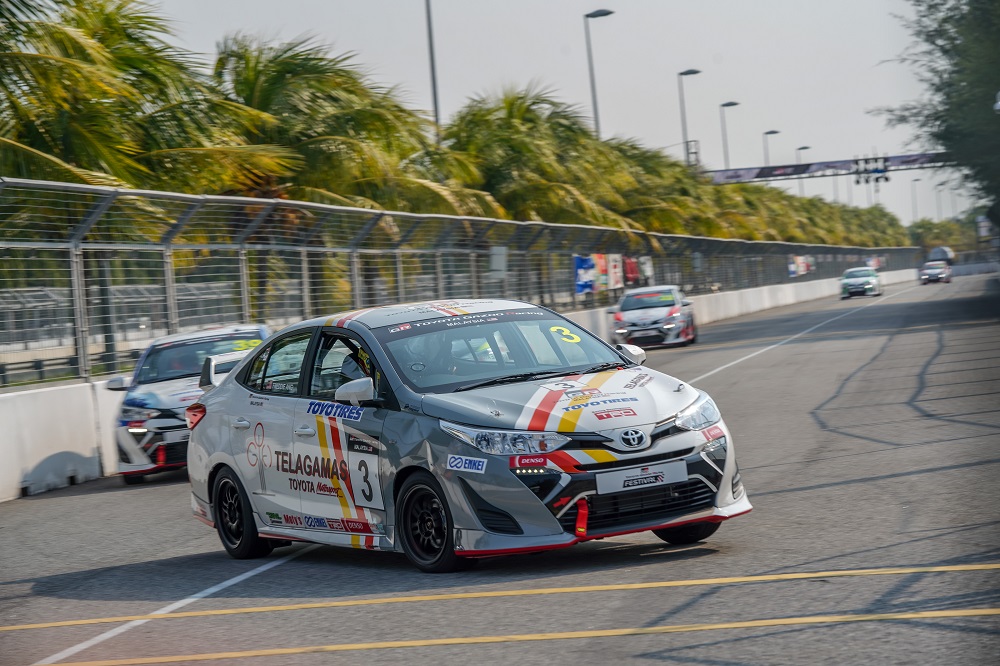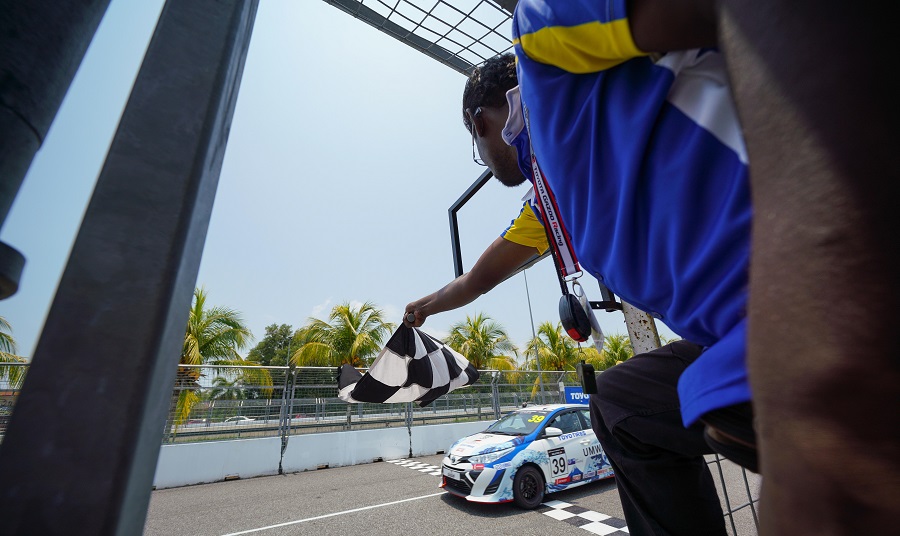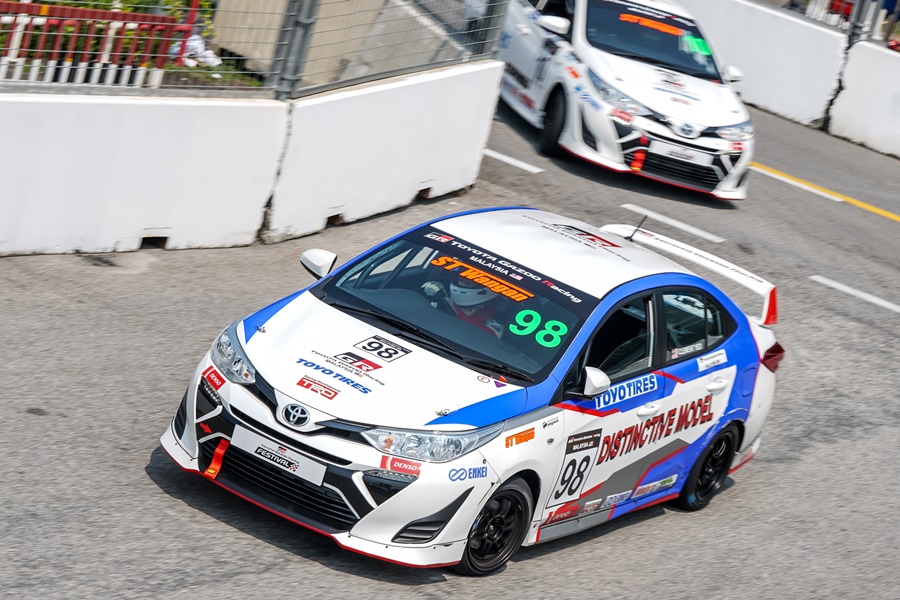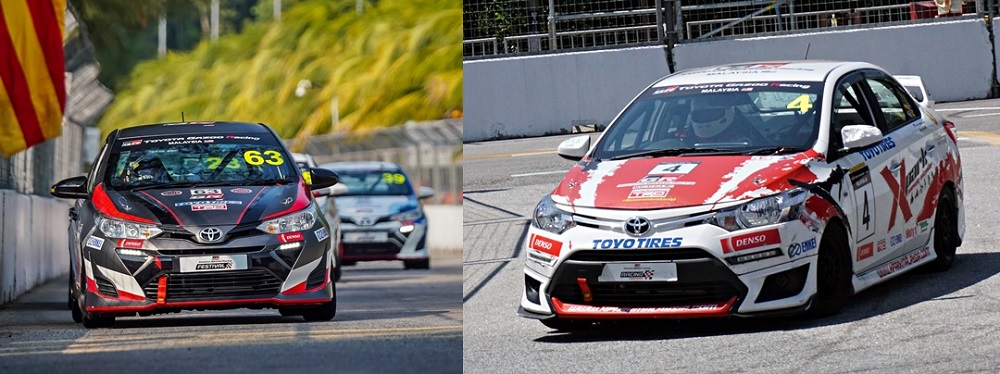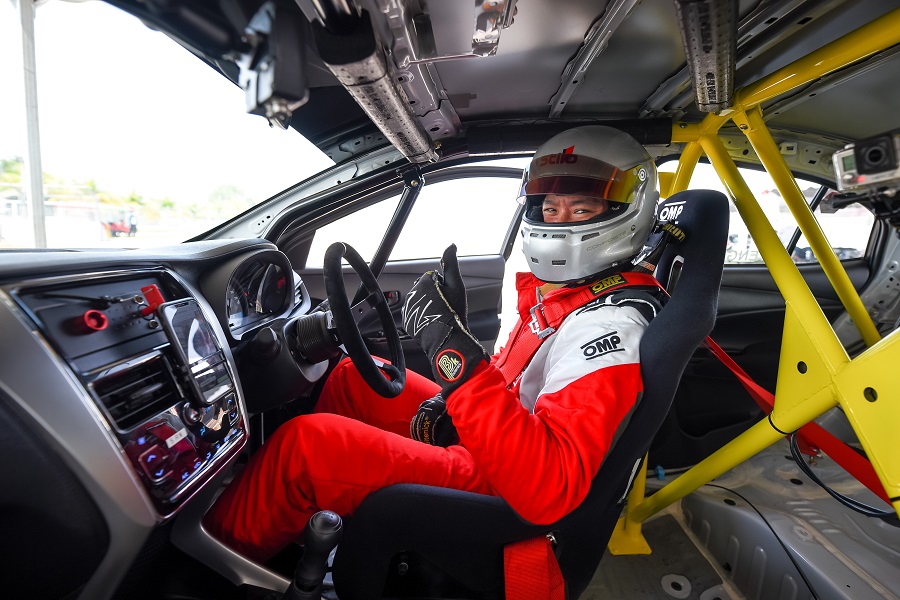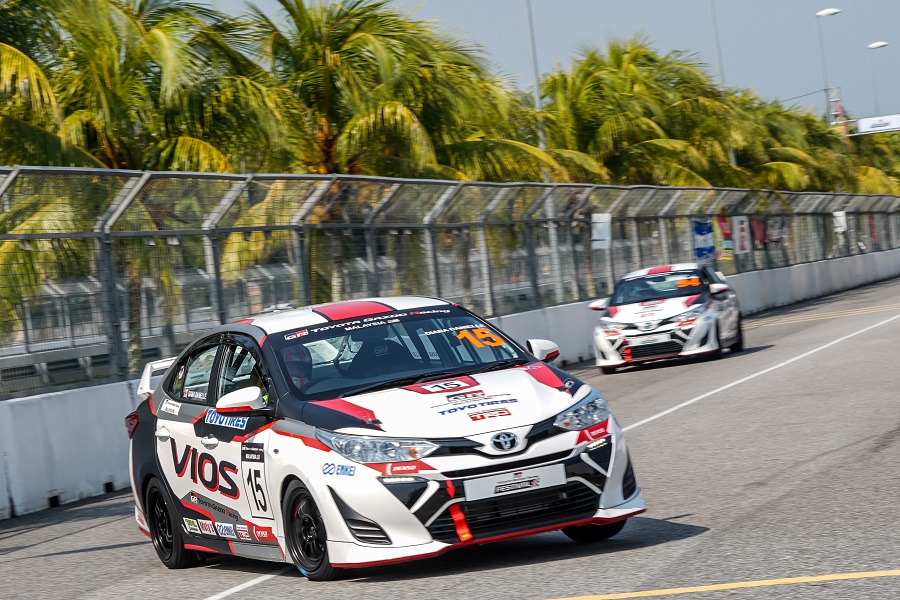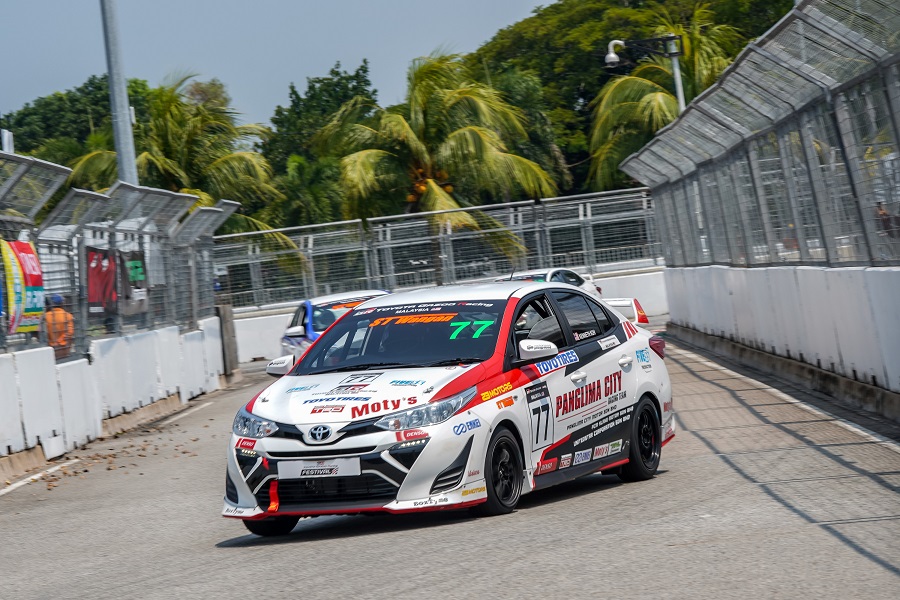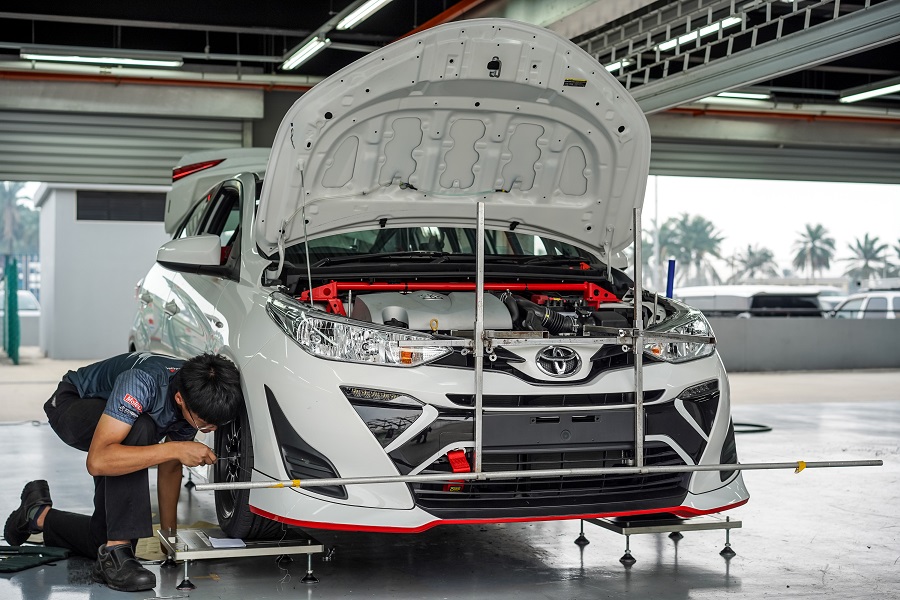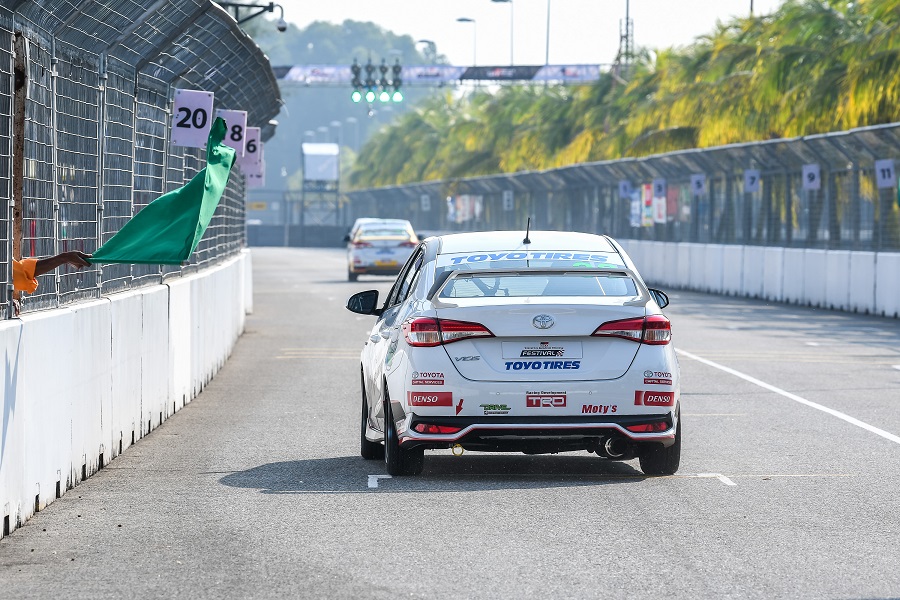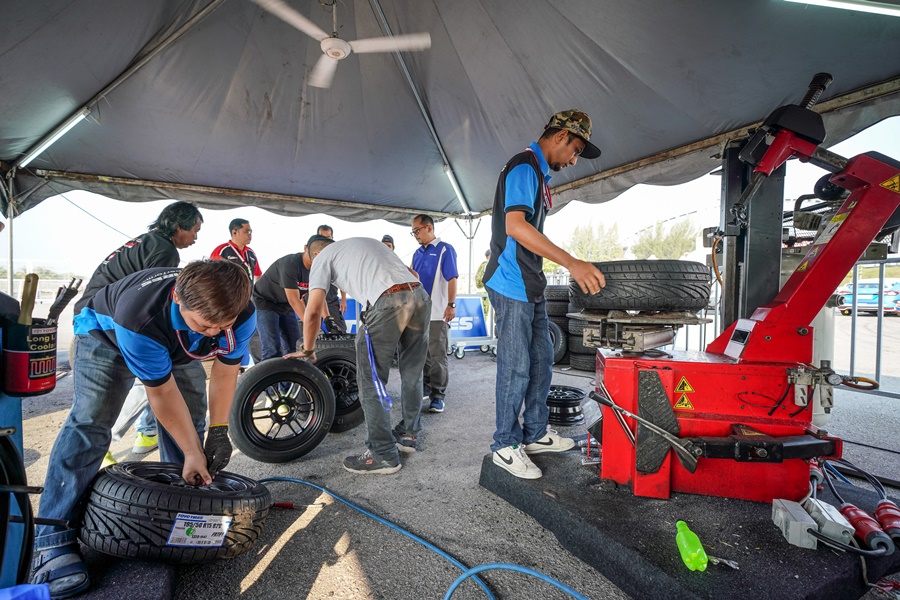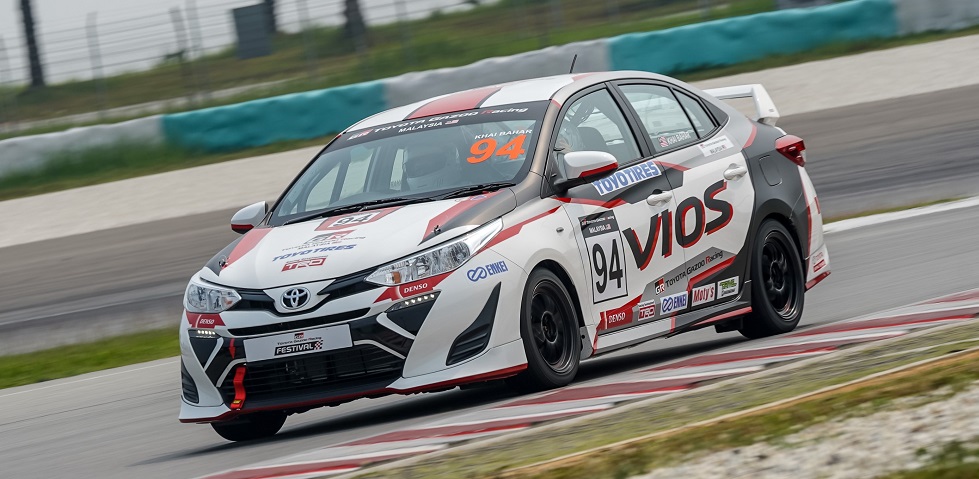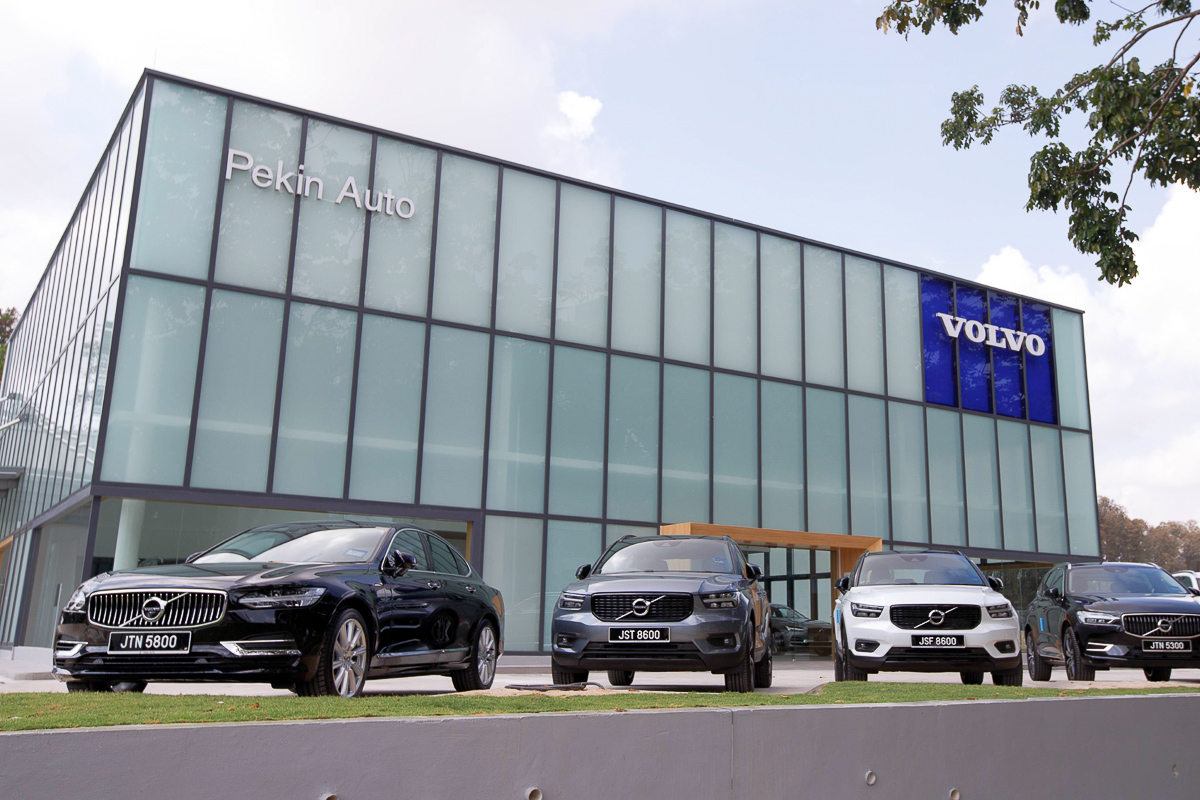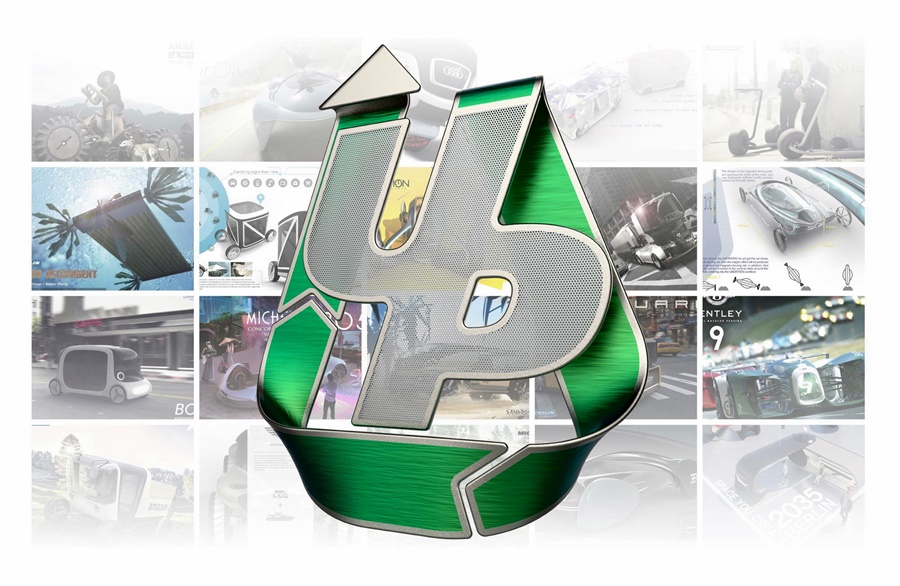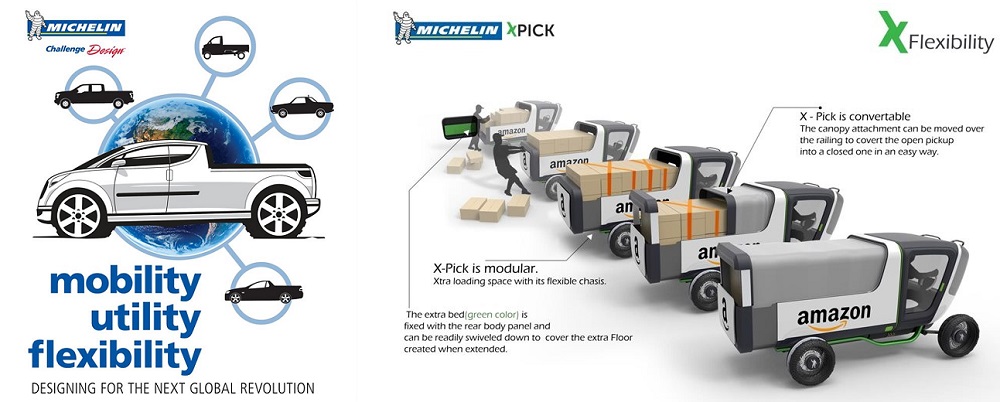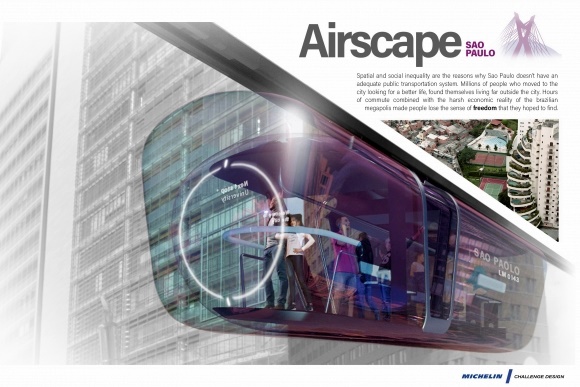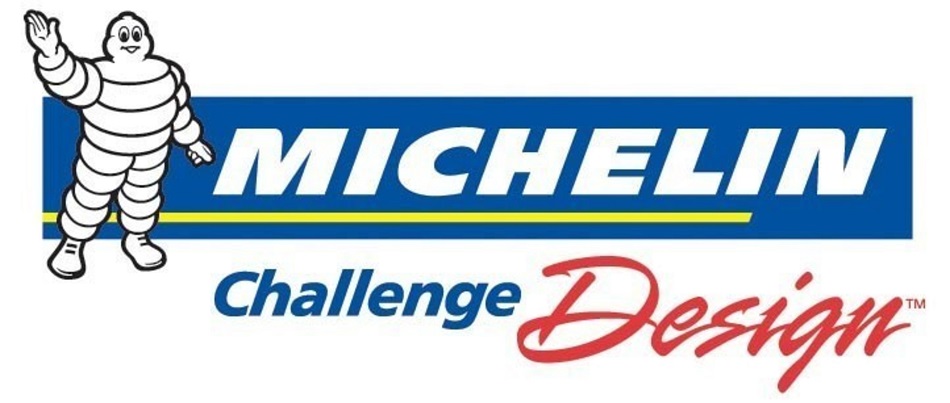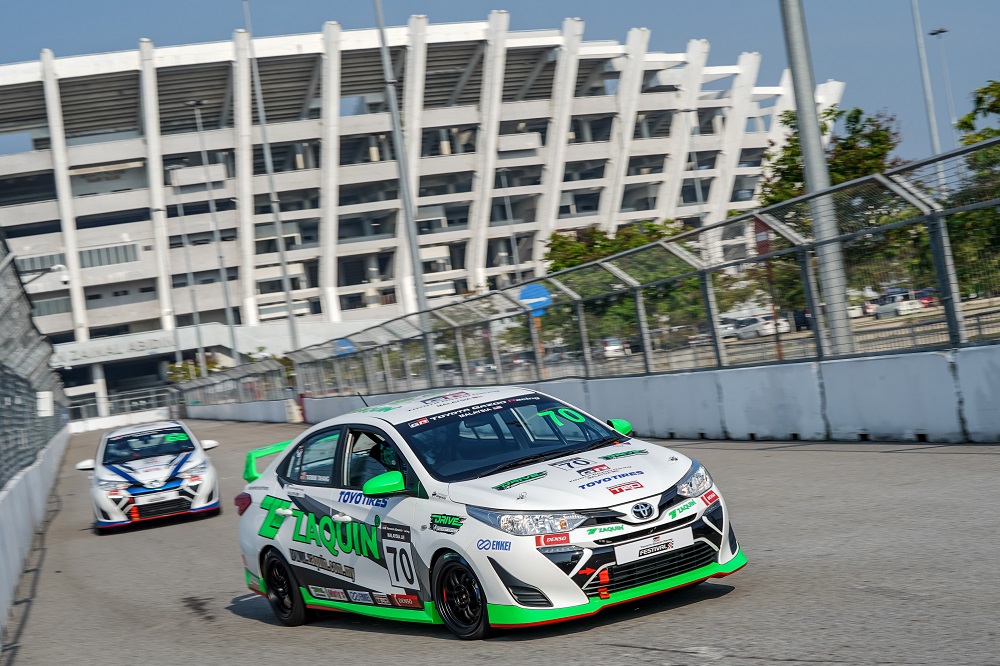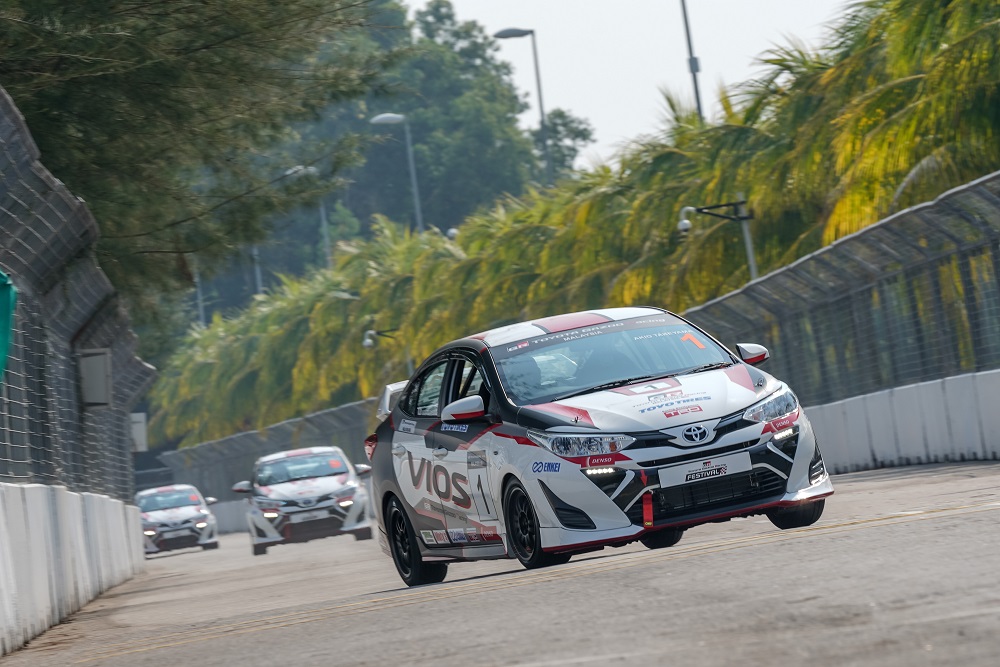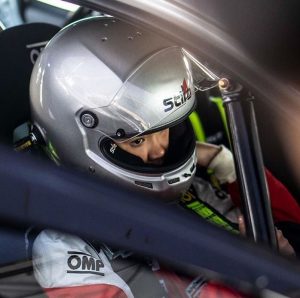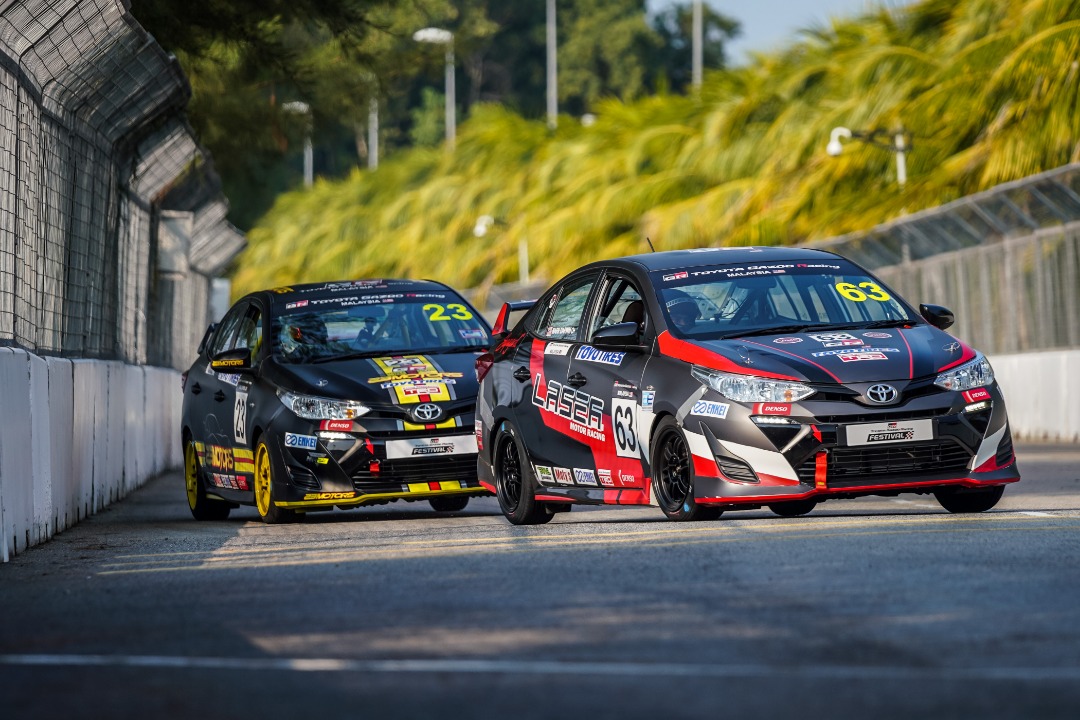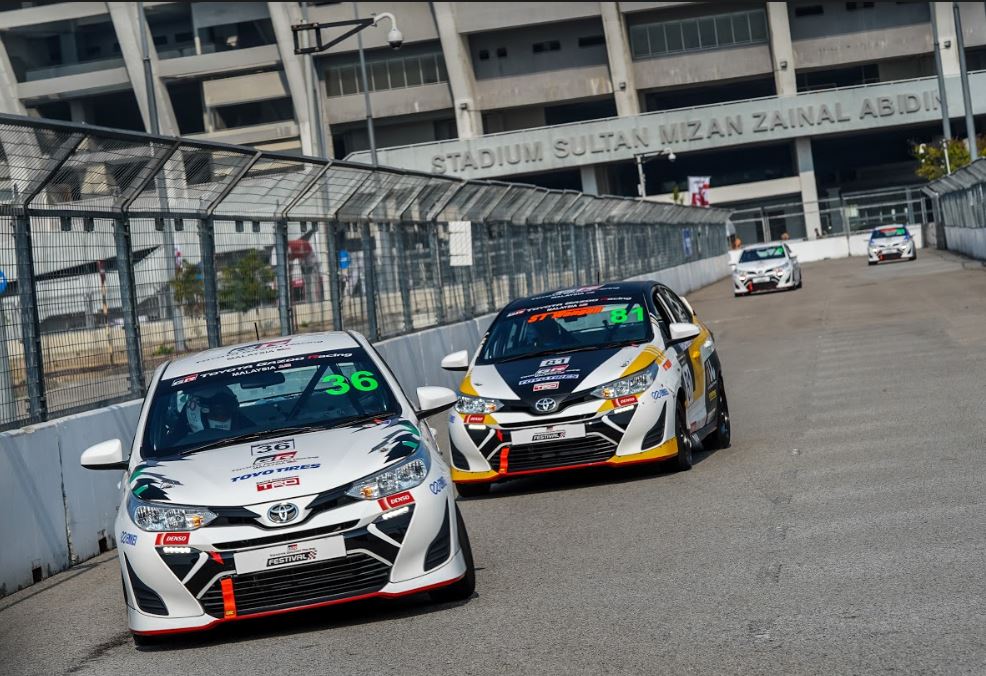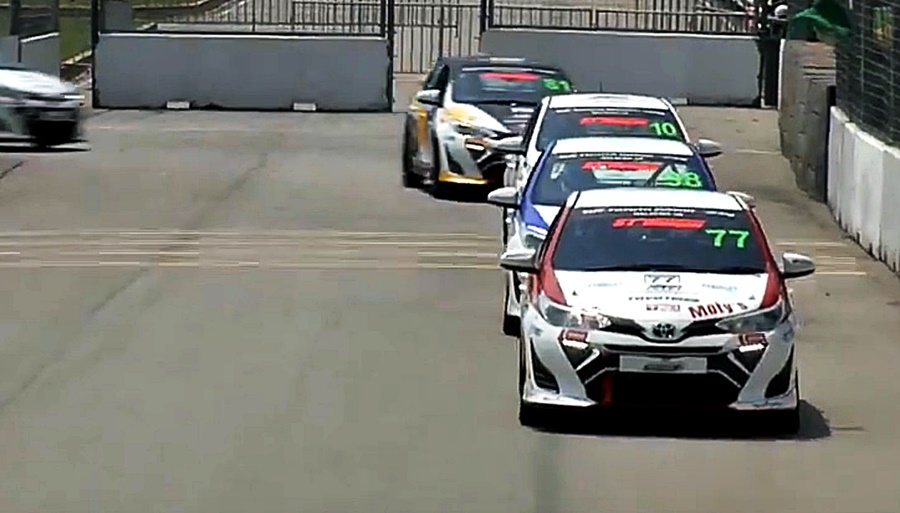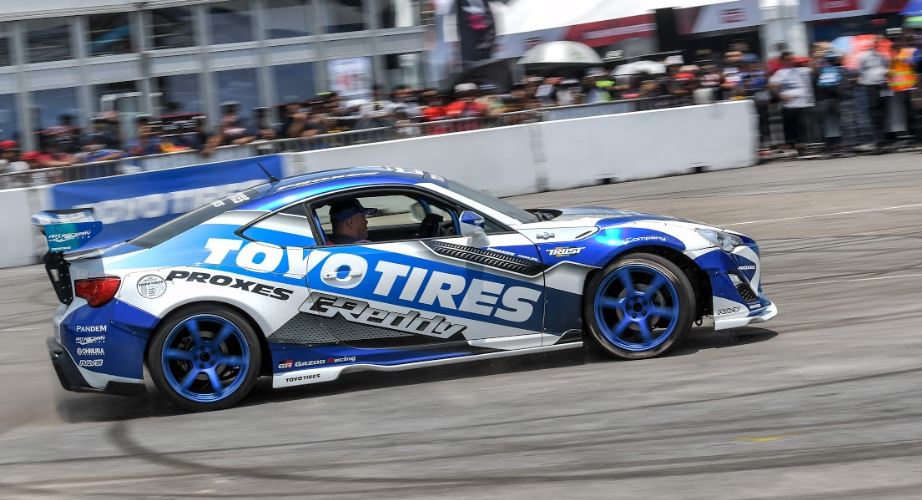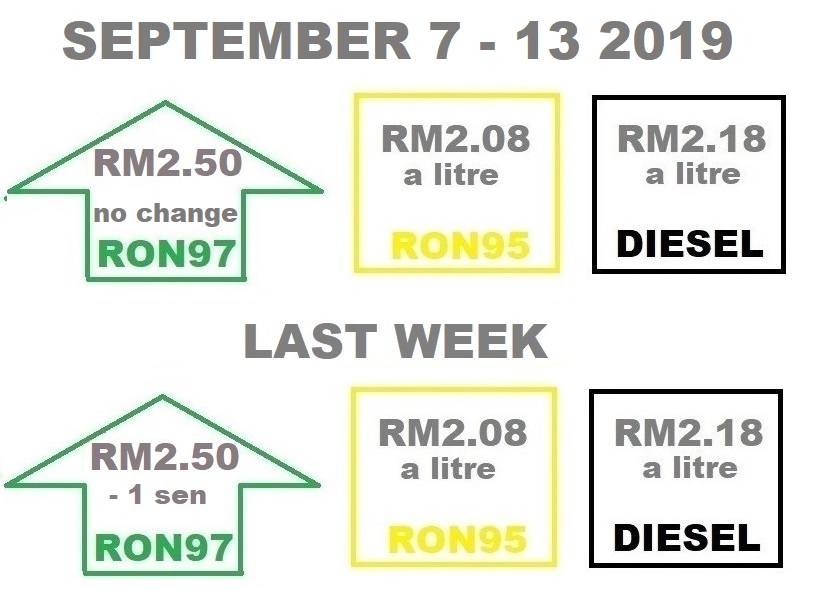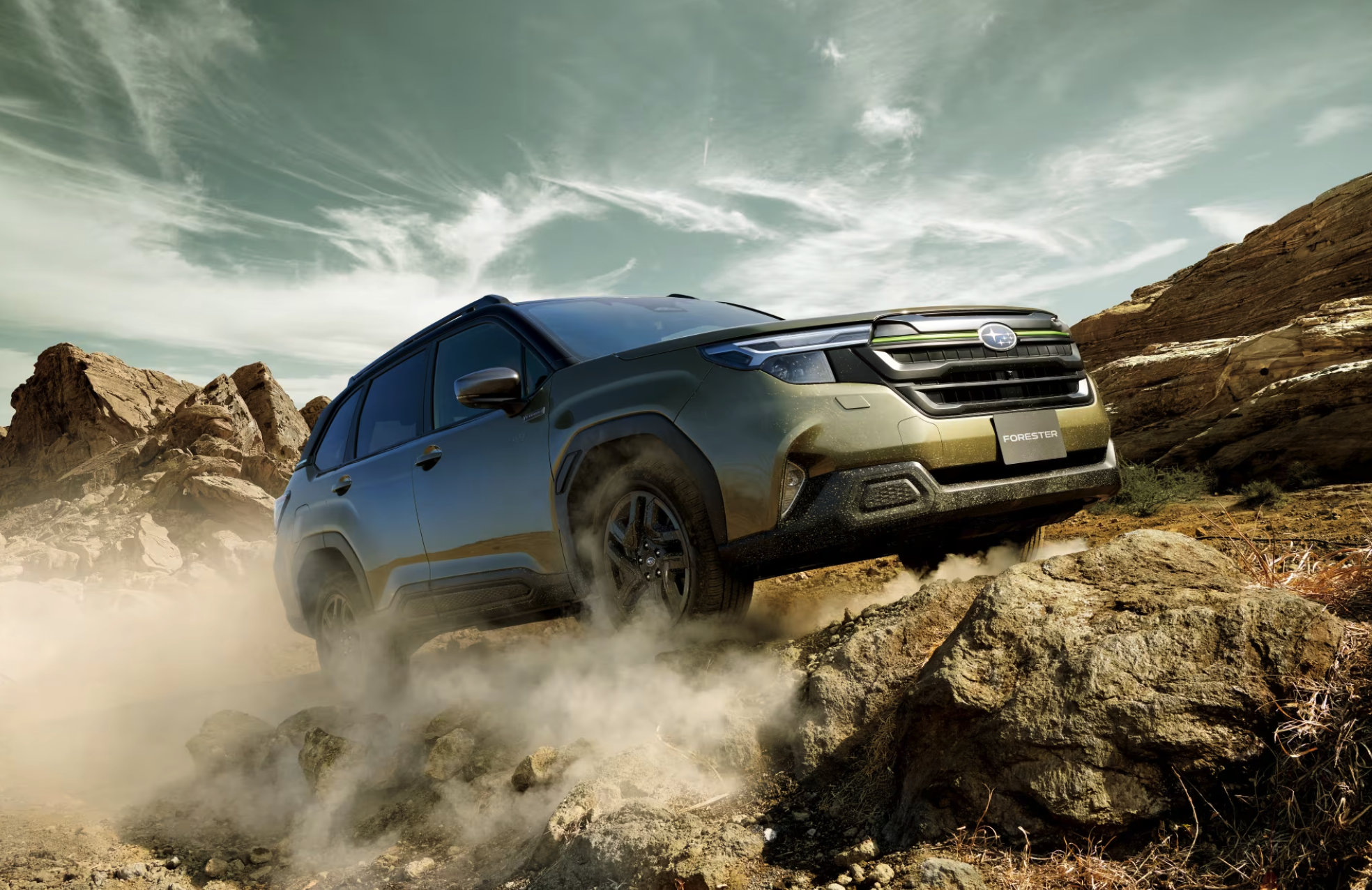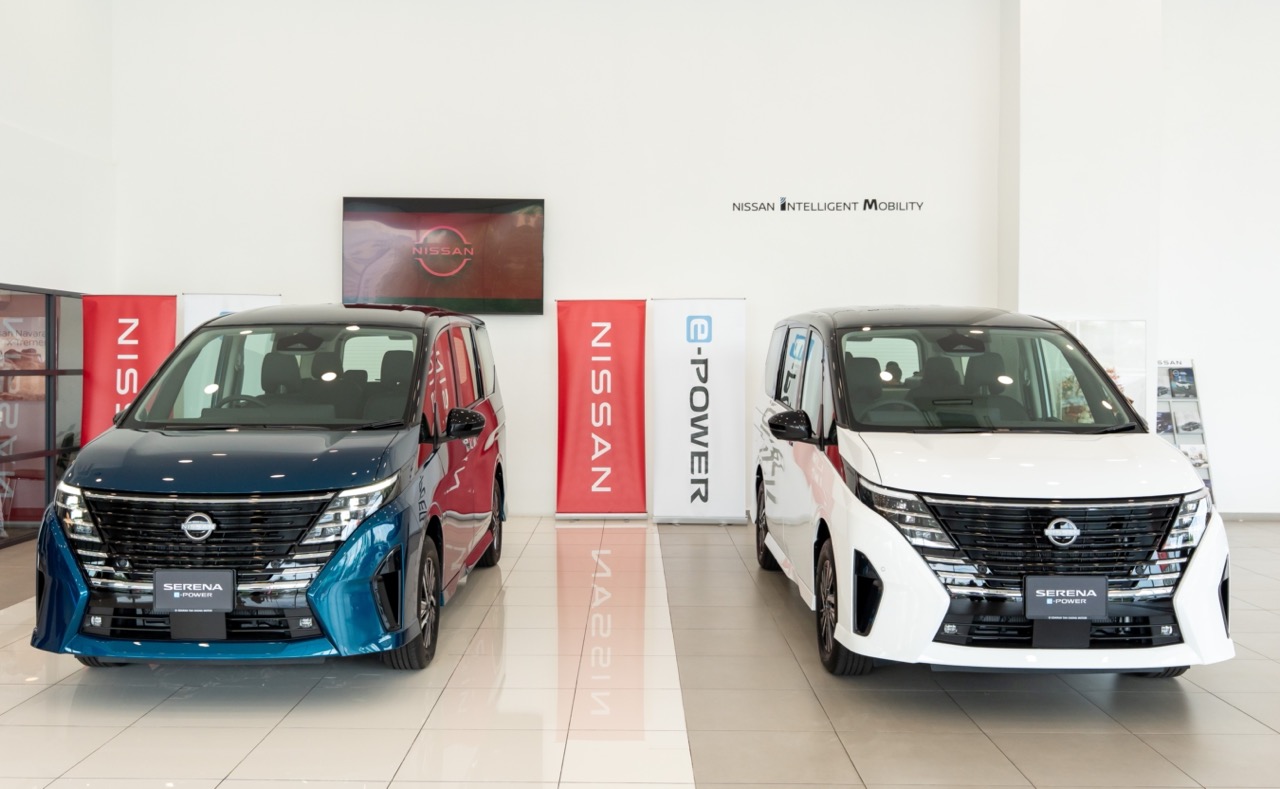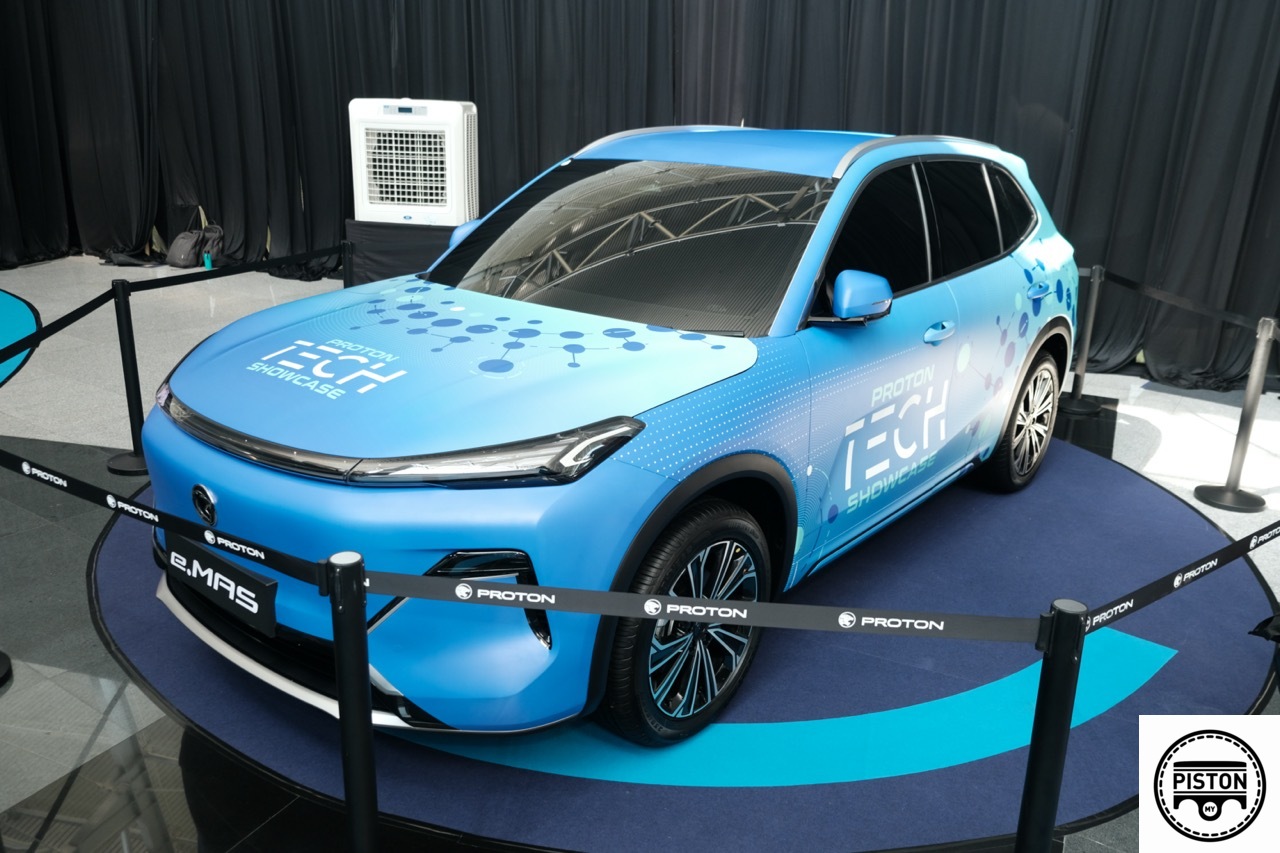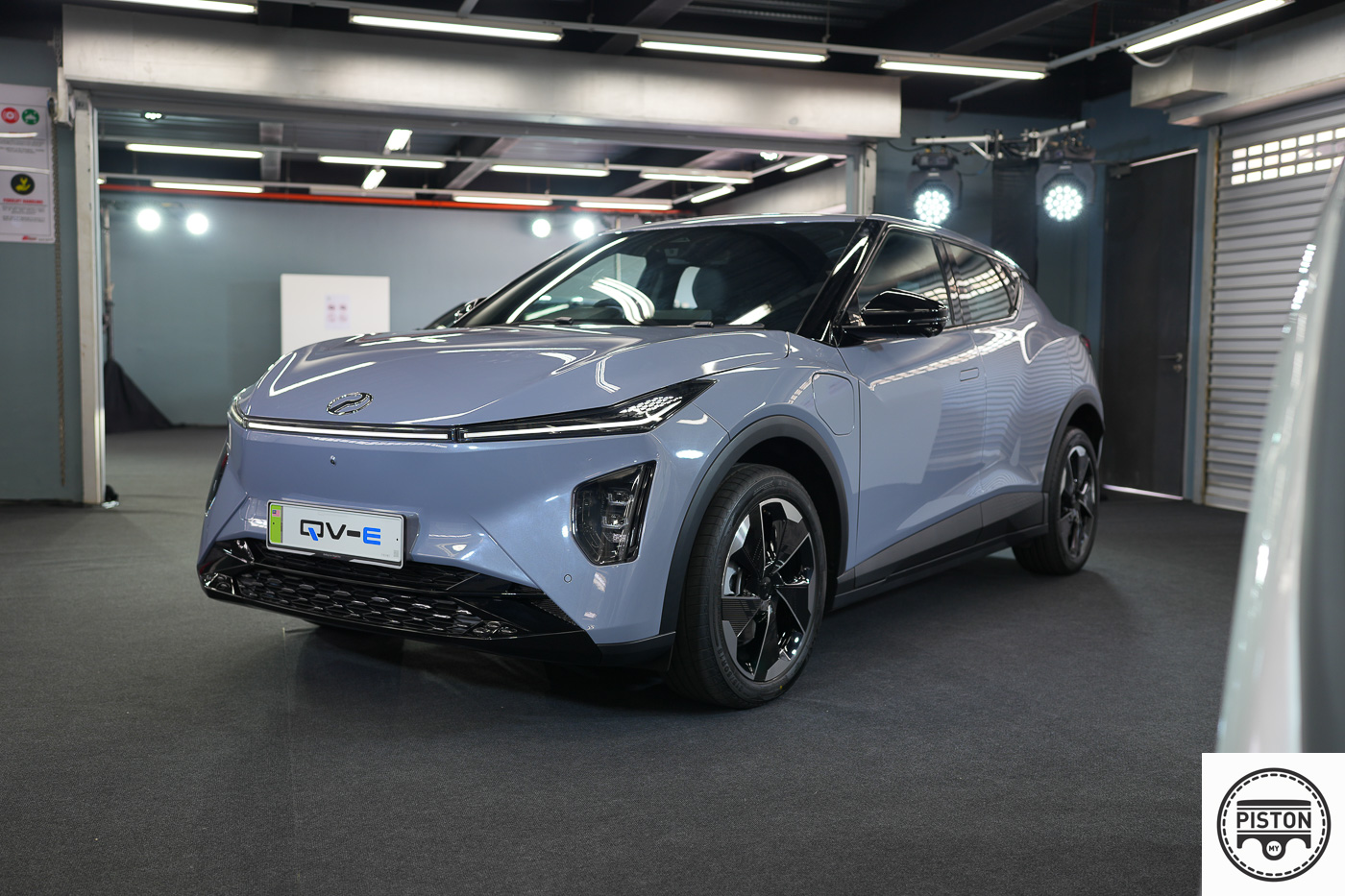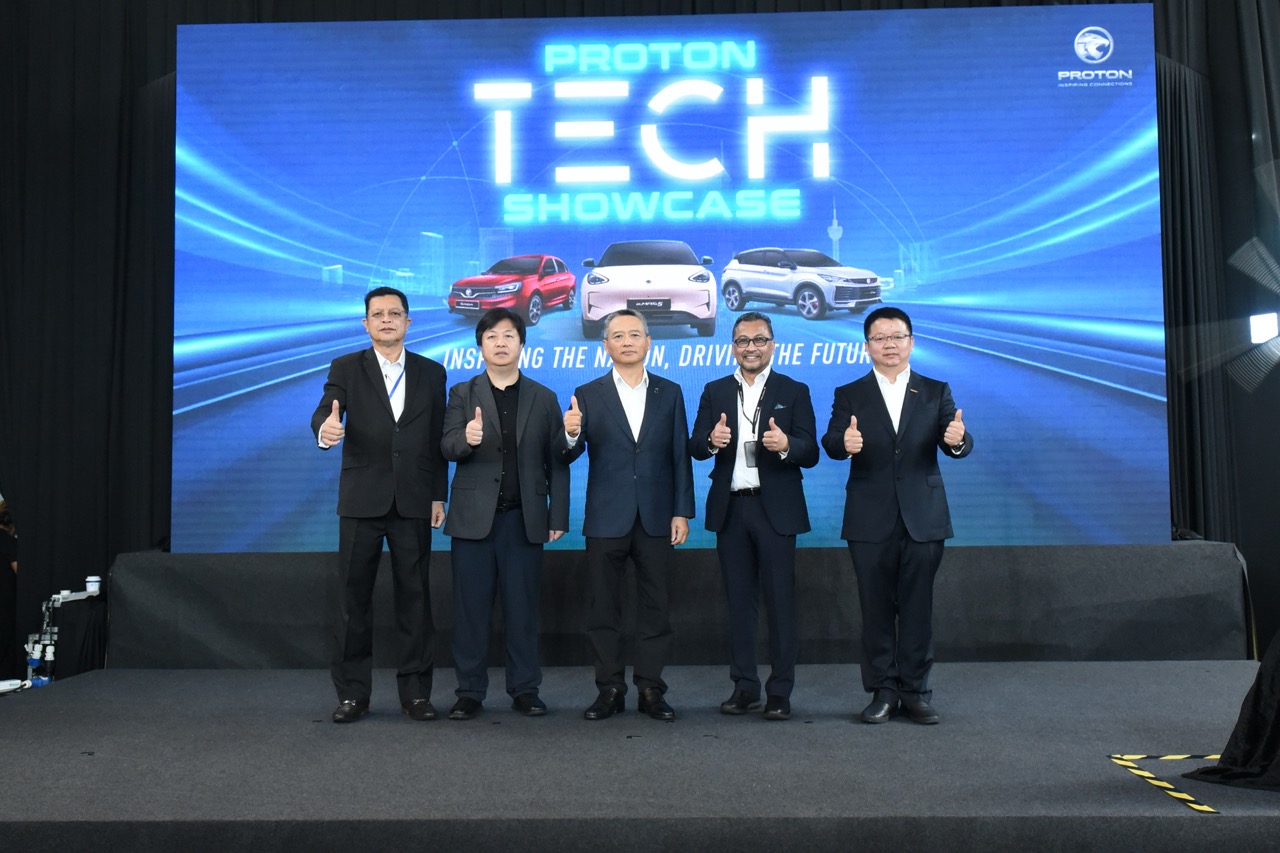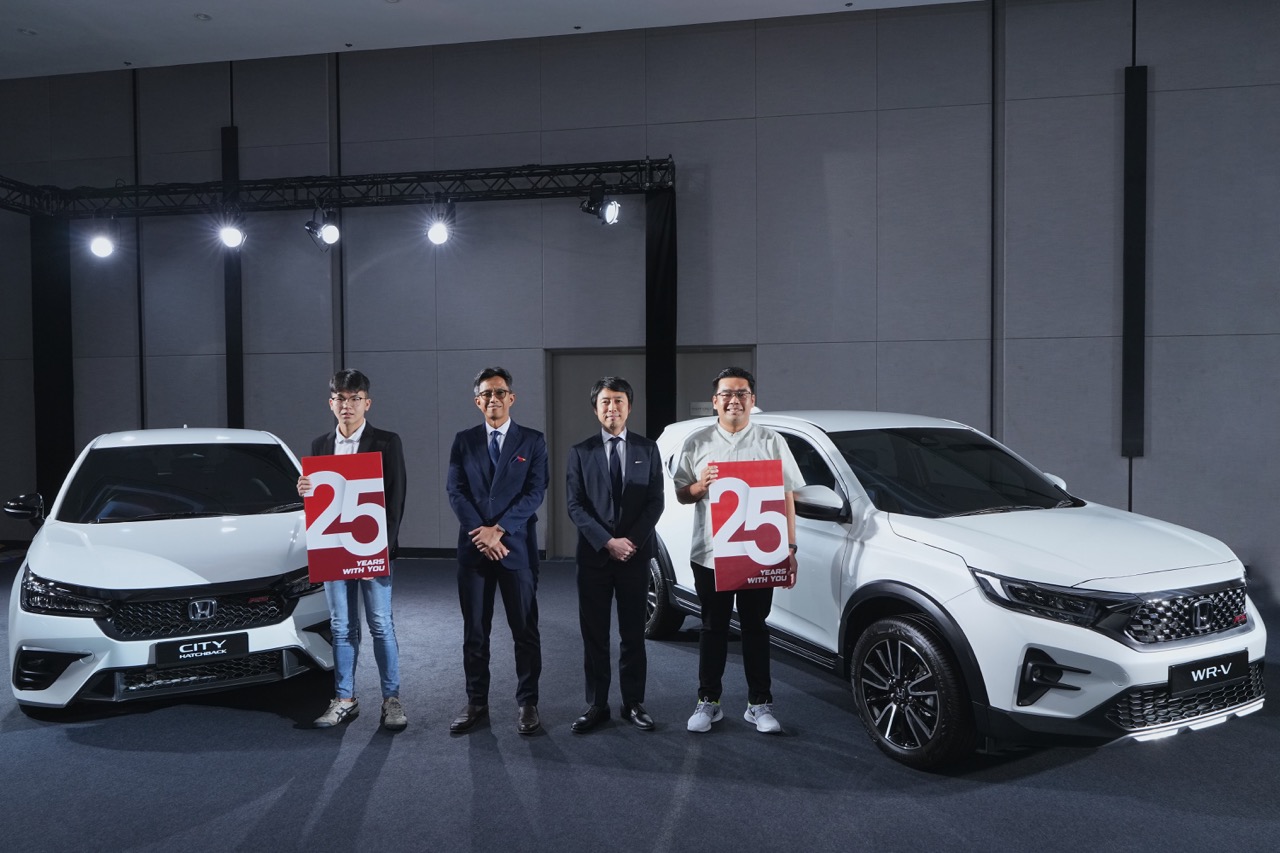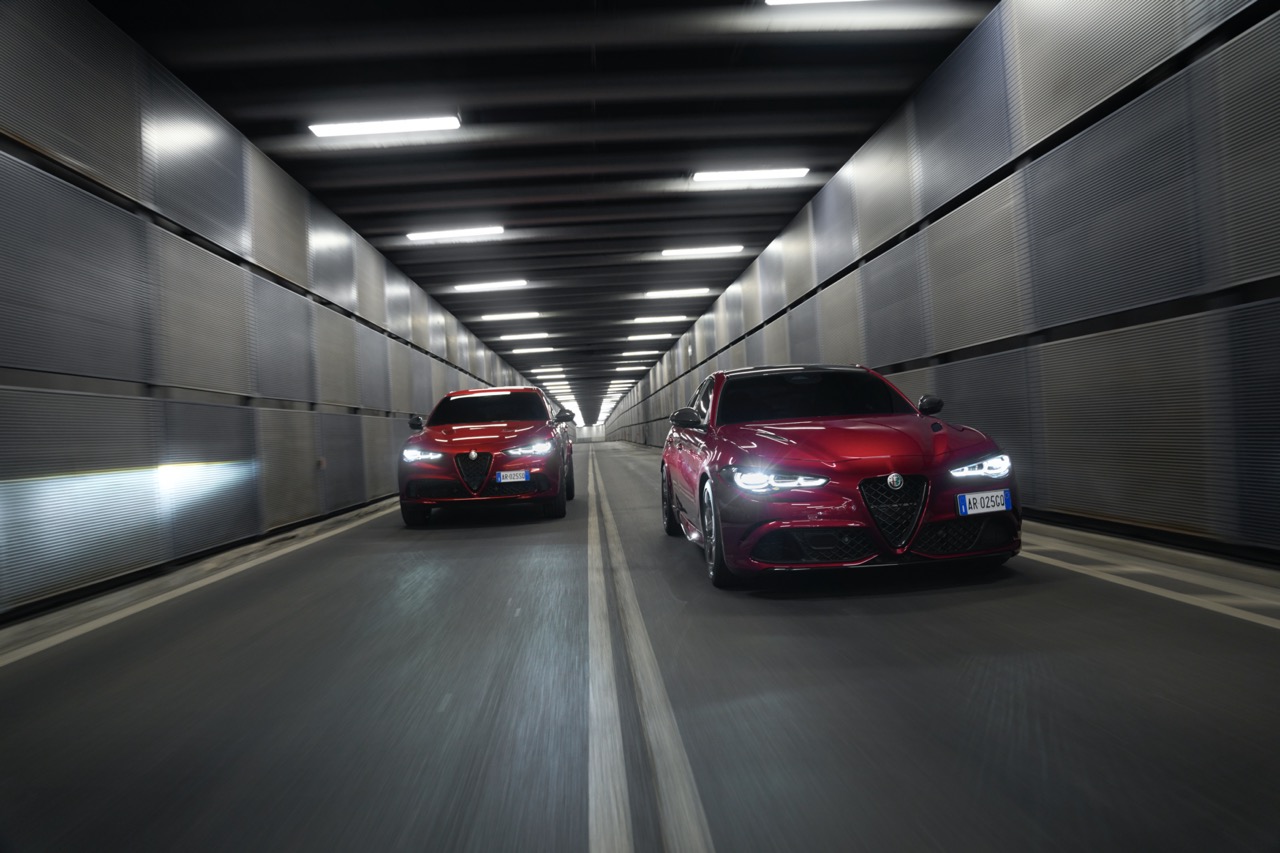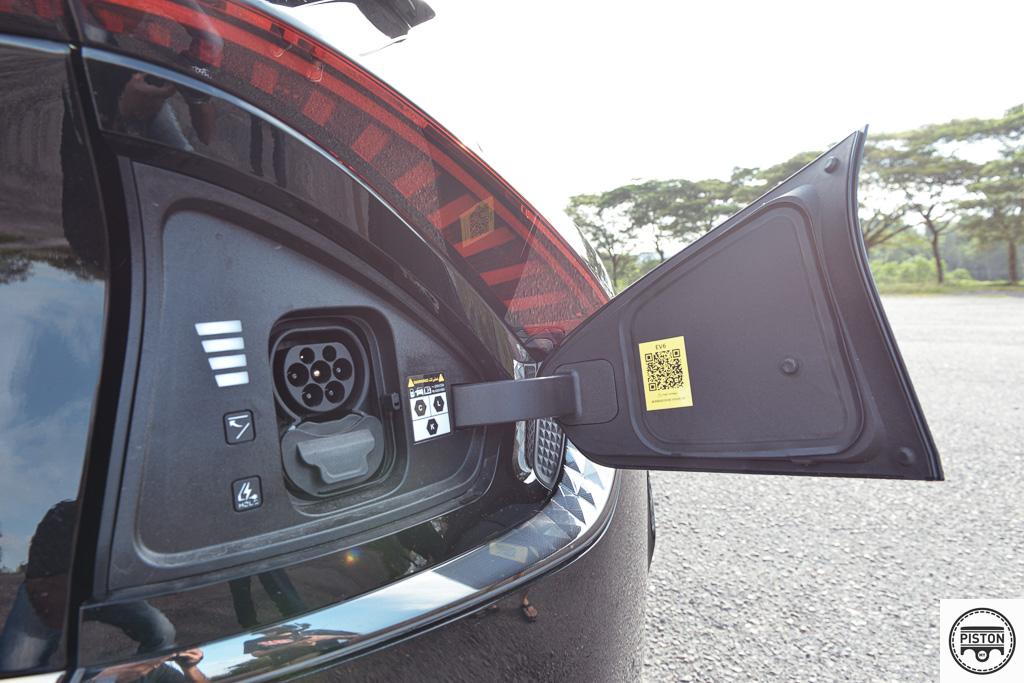The second day of the Vios Challenge, part of the Toyota GAZOO Racing (TGR) Festival Season 3 held in Kuala Terengganu on Friday and Saturday, produced a series of many firsts. For starters, 15-year-old Hayden Haikal stormed to his second race victory and his first ever win on a street circuit in the Sporting Class, while singers Wany Hasrita and Nabila Razali climbed the winners’ podium for their first time in the Promotional Class for celebrity drivers.
SPORTING CLASS
“I’m extremely happy with the race win because Kuala Terengganu is a very challenging track. Frankly, I don’t really enjoy this track because there’s hardly any opportunity to overtake here but thankfully everything fell into place today,” said Hayden who finished the race ahead of Hiewa Racing Team’s Wong Chin Eeg and Panglima City Racing’s Kenneth Koh who crossed the finish line in third position.
Coincidentally, Kuala Terengganu was also the venue where Hayden made his debut in the Vios Challenge in the last season. A rookie then, he started his first ever saloon car race in ninth position and also finished ninth.
The start of the 22-lap race started rather dramatically with pole position man Shanmuganathan Arumugan being squeezed out of contention going into the first corner. Wong had an exceptionally good start from second on the grid to punch a hole in the traffic to slip into the lead, leaving enough space for Hayden and Kulim Topwheels driver Dato’ Kenneth Foo to move into second and third positions respectively. Koh however, overtook Foo for third position by the end of the first lap.
Wong held on to his lead for seven laps until making a slight mistake which allowed Hayden to inherit the lead. “Hayden was a lot quicker on the track and as soon as I made a mistake, I saw him beside me. I then made the decision to back off and let him through. It would not have benefitted any of us had the two cars came together,” said Wong.
“After overtaking, I tried to build a gap to Wong, pace myself and focus to not make any mistakes especially in the corners,” Hayden said of the duel.
Koh meanwhile, was a man on a mission to score as many championship points possible as he claimed his second visit to the winners’ podium in two consecutive races over the weekend. His third place finish was a fitting end to the weekend which also included winning Race 1.
“I felt a slight impact at the rear going into the first corner and from then on, I became rather paranoid of having incurred any damage. I tried to close the gap to the car ahead but in the end, the most sensible thing to do was to pace myself to the end because there was also a big gap between me and the car behind,” said Koh.
PROMOTIONAL CLASS
Rain again came in the late afternoon (like last year) and as the drivers were more cautious, this popular race was uneventful. In fact, the start had to be delayed for 30 minutes before resuming behind the Safety Car.
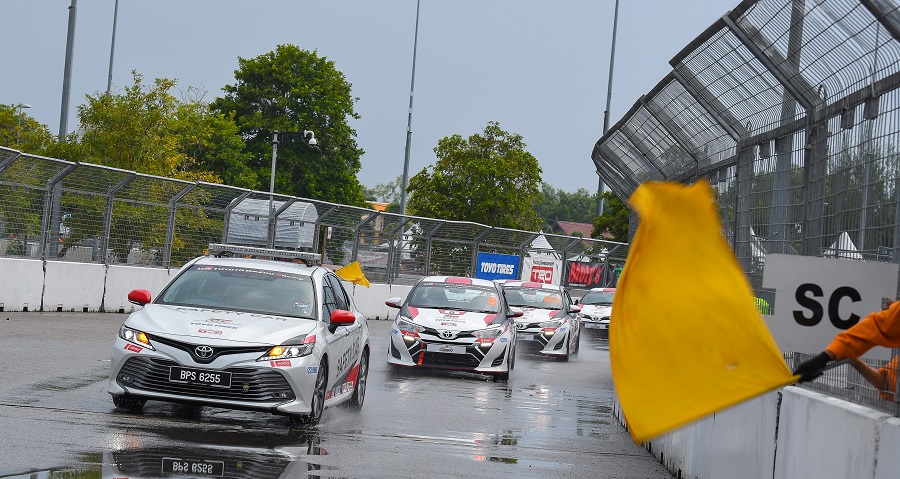
The wet conditions however, turned out to be in favour of singer Wany Hasrita who stormed into her first ever race win. In second place was fellow singer Nabila Razali, also making her first appearance on the winners’ podium, followed by actor Shukri Yahaya in third position.
“The wet track conditions made the race twice as difficult but I did my best to keep my cool and to avoid making any mistakes. The track was slippery and that meant having to pick an earlier braking point into the corners,” said Wany who started from pole position on the grid.
Victory was also extremely sweet for Nabila who demonstrated a more calm and composed drive to finish in second place and claim her first visit to the winners’ podium.
“Season 2 was really difficult for me and I struggled to finish the race but thankfully, the long hours of practice and with guidance from the instructors, my driving and confidence level on the track has improved so much. I’m hoping to do much better this season,” said Nabila.
Related story: Competitors find new Vios racing car a much better performer
SUPER SPORTING CLASS
With the exception of Brendon Lim who dropped from fourth position on the grid to eighth place and Brendan Paul Anthony who lost one place, all the drivers in the Super Sporting class maintained their track positions from start to finish in the 22-lap race.
Toyotsu Racing’s William Ho led from start to finish, with Telagamas Toyota’s Freddie Ang taking second place some 1.93 seconds behind, and Kenny Lee of Kegani Racing completing the top three a further two seconds adrift.
In the class of the elite professional racers, the race unfolded with all drivers posting super competitive times and remaining within the 1 minute 15 second to 1 minute 16 second bracket around the tight and narrow 1.65-km street circuit. While it is always difficult for any competitor to overtake on a narrow street track, Ho found that leading the race also placed a degree of pressure.
“Freddie was very close to me and I tried my best to pull away but that proved to be very difficult and I tried my best to keep composed and to not hit the concrete barrier. It was a question of maintaining my pace, not pushing too hard and finishing the race to score valuable championship points,” recalled Ho after the race.
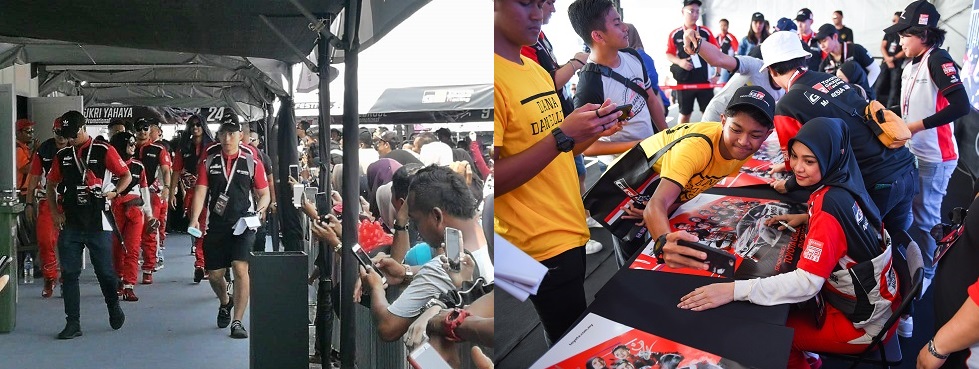

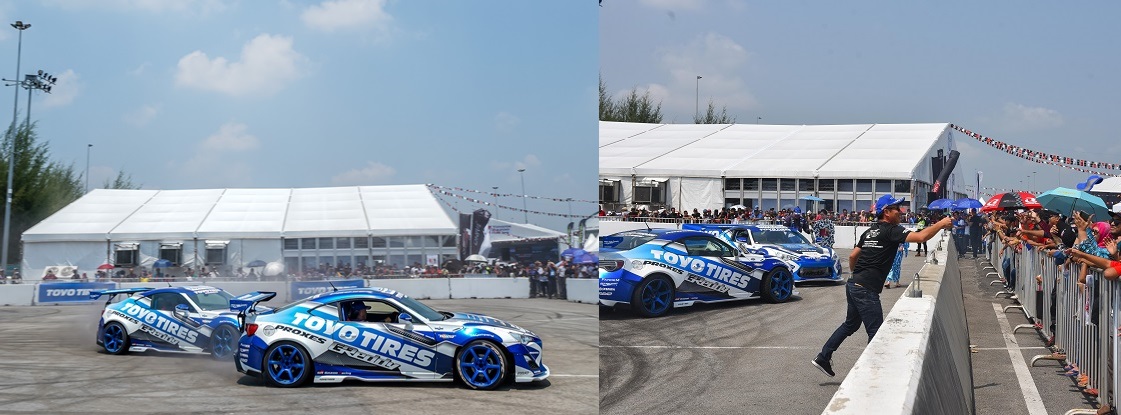
Round 2 of the Vios Challenge and TGR Festival will be held in the Central Region but the venue has not been confirmed yet. It would likely be at the MAEPS site outside Kuala Lumpur which has a lot of space for setting up the track, as well as plenty of parking areas. To get updates on the event, visit toyota.com.my/tgrmalaysia/tgr-racing-festival/season-3.

